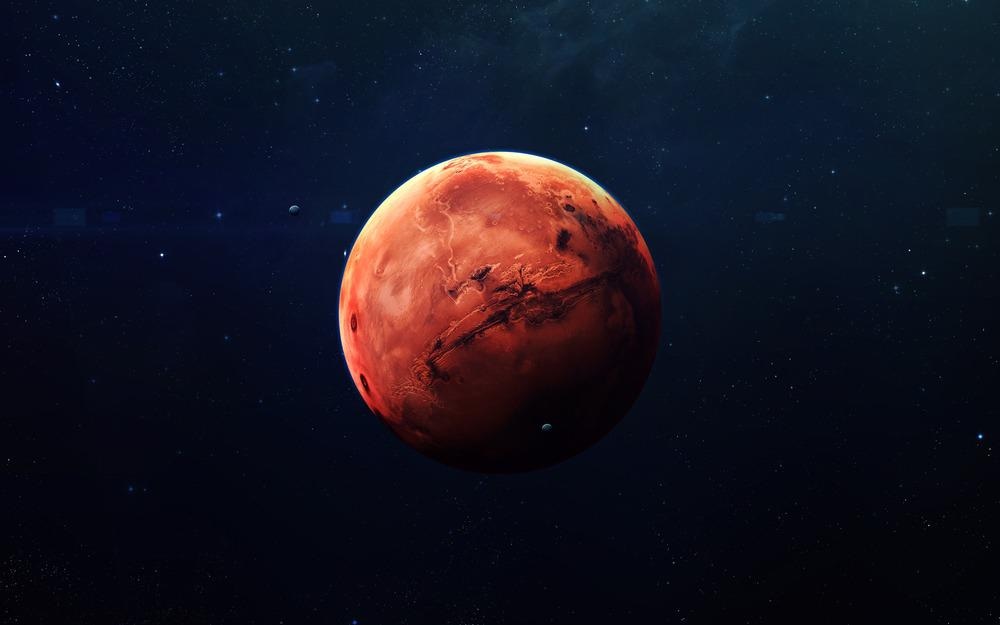
Image Credit: Vadim Sadovski/Shutterstock.com
Laser-induced breakdown spectroscopy (LIBS) instruments built into the latest generation of Martian rovers will provide planetary scientists with a wealth of new data on Martian geology – but to learn from it, they will need to overcome a critical challenge with their machine learning models.
Because scientists do not have real Martian rock samples to work with in the lab, there is no training data to calibrate the machine learning models usually used to analyze LIBS spectra. Though scientists have improvised make-shift training sets using Earth rocks, results are still skewed by ‘physical matrix effects’.
Researchers from the School of Physics and Astronomy at Shanghai Jiao Tong University in China have proposed a novel workaround to this problem by experimenting with a ‘transfer learning’ approach instead – with promising results. This new approach could significantly improve scientists’ analysis of LIBS spectra data obtained from Mars rovers such as Perseverance and Tianwen-1.
Physical Matrix Effects and Machine Learning
On 18 February 2021, NASA’s Perseverance rover landed on the Martian surface to continue a decades-long search for extra-terrestrial ancient life. Perseverance’s arrival on Mars also marked the successful first leg of a broader joint-mission by NASA and ESA (the Mars Sample-Return mission) to bring samples of Martian rock back to Earth for the first time.
While scientists work out the practicalities of the return mission, planned for later this decade, Perseverance will continue to analyze the Martian terrain remotely using the bounty of advanced instruments packed into its car-sized body – such as ChemCam, which uses LIBS to analyze the chemical composition of rocks, minerals, and soils.
But scientists face a problem here. LIBS spectra data is traditionally analyzed using machine learning techniques that require training data to calibrate the model and results. As scientists do not have real Martian rock samples to create this training dataset from, the scientists behind ChemCam improvised a ‘laboratory standard’ sample set of 408 natural Earth rocks and synthesized chemical compounds which could act as a make-shift training set for the Mars LIBS data. The samples in this set must be prepared in the form of pressed powder disks, glasses, and ceramics to minimize their heterogeneity.
Though this solves one problem for scientists, it leaves another: changes in the measured signal for a given chemical compound due to differences in surface and physical properties. These are known as physical matrix effects. Any LIBS spectral data obtained by Perseverance on Mars will need to be corrected to account for these effects, and researchers believe the use of 'transfer learning’ could be a solution.
Transfer Learning
Transfer learning is a field of machine learning which applies knowledge gained in one domain to a different but related domain. It can be useful when scientists are working with insufficient datasets but also have access to a different and related sufficient set of data.
In the researchers’ experiment, a machine learning model was trained only on the laboratory standard dataset and used to predict the concentrations of major oxides in natural Earth-rock samples. The influence of the physical matrix effect was observed, as expected.
A transfer learning model was then tried, which combined the laboratory standard dataset with data representing natural rocks with known concentrations of major oxides. The model was trained and used to predict the concentrations of the major oxides for the rock samples.
Using a test case of total alkali-silica (TAS) classification of natural Earth rocks, the transfer learning model improved the accurate classification rate from 33.3% to 83.3%. The transfer learning model successfully took into account the physical matrix effect and resulted in a robust classification model.
Mars and Beyond
The positive results suggest LIBS spectral data attained from rovers such as Perseverance and Tianwen-1 in situ on Mars could be calibrated with prediction models using the laboratory standard samples, and without significant distortion due to physical matrix effects.
This is important for understanding the chemical composition of Martian rock, and in turn, the scientific objectives fixed for the Mars exploration missions: searching for ancient signs of microbial life and understanding the past habitability of Mars, as well as the potential for future habitability.
Closer to home, the researchers believe the transfer learning approach could improve industrial uses of LIBS, and help the technology find new commercial applications.
References and Further Reading
Sun, Chen, et al. (2021) From Machine Learning to Transfer Learning in Laser-Induced Breakdown Spectroscopy: the Case of Rock Analysis for Mars Exploration. arXiv preprint arXiv:2102.03768 https://arxiv.org/abs/2102.03768
Mars 2020 Mission [Online] NASA. Available at: https://mars.nasa.gov/mars2020/ (Accessed on 8 March 2021).
Matrix Effect [Online] ScienceDirect. Available at: https://www.sciencedirect.com/topics/engineering/matrix-effect (Accessed on 8 March 2021).
Disclaimer: The views expressed here are those of the author expressed in their private capacity and do not necessarily represent the views of AZoM.com Limited T/A AZoNetwork the owner and operator of this website. This disclaimer forms part of the Terms and conditions of use of this website.